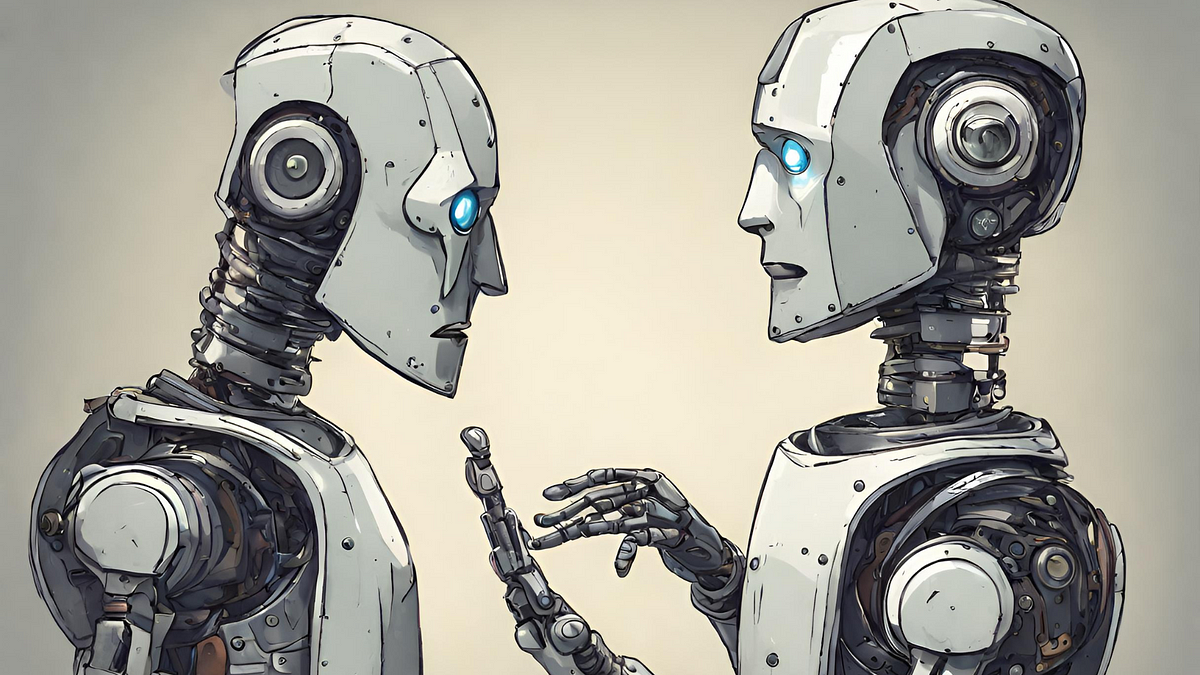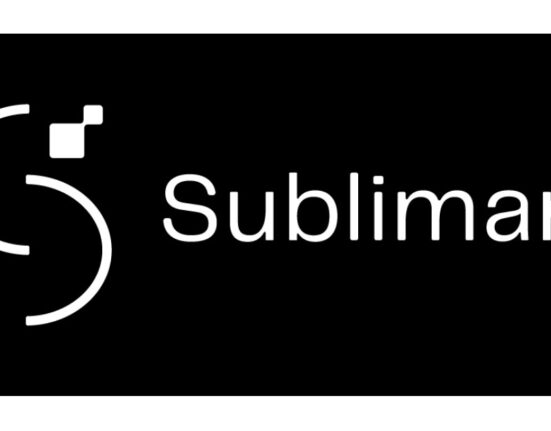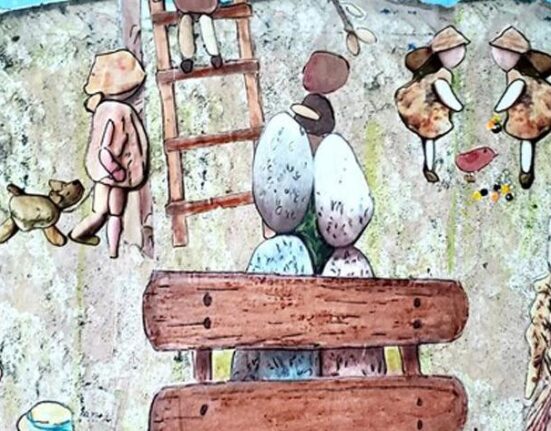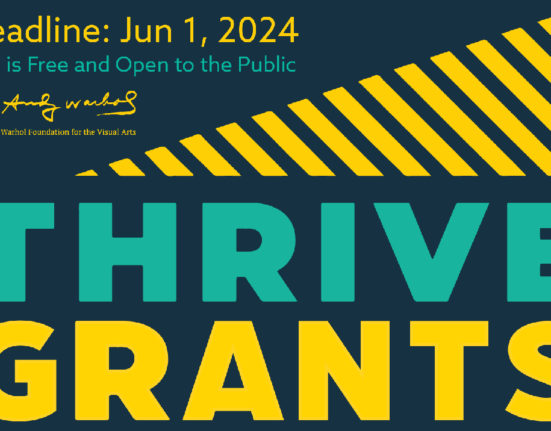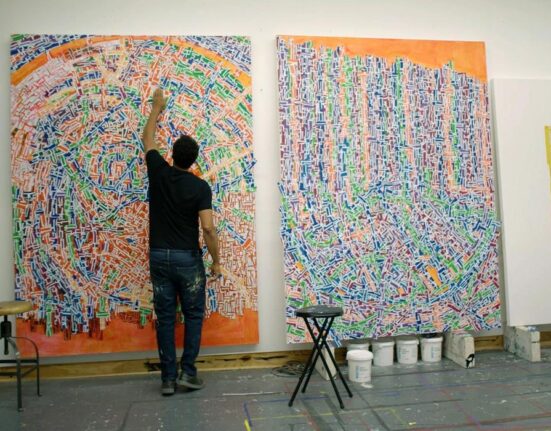A note from the author: My output on Medium so far has been incredibly whacky and clownish in tone. This article will be a quite different, as I believe its subject merits serious treatment.
The two-hour audio drama I want to make will cost less than $2,000, and might take perhaps two months to produce.
I will be able to produce it without involving anyone else. That is only possible because of AI tools like PlayHT, Suno, and AIVA.
I am a writer and AI enthusiast. I have used Midjourney to create images for AI art comic books, have played around with ChatGPT, and now am going to use the software tools I just mentioned to create my new audio drama. I wrote every word of the 125-page script with no assistance from AI. There are changes coming in the world of pop culture in the next few years, both on an institutional and grassroots level. My main concern here is with the latter. The revolution I predict is mainly going to be about commerce and technology, but both factors will influence the aesthetics of many different types of popular and not-so-popular art.
To be clear, what I mean is that AI tools of the kind I am using could be used to move the creation of, for instance, film, from a backlot in Hollywood to a backyard in Seattle. What was once a monumentally expensive undertaking could now become comparable, in cost, to a modestly elaborate car maintenance or gardening hobby. The sort of people who make AI art, from my direct experience, are exactly the sort of people who would like to and can afford to work on their hotrod or plant a vegetable patch, but are prevented from, say, making a movie, by relative financial embarrassment, not a lack of creativity and ambition.
But the wonderful thing about AI tools is that, in theory, it could make the matter of having too thin of a wallet to make, say, a new epic fantasy film, a moot point. AI technology potentially eliminates not only that problem, but the need to hustle and grind one’s way into Hollywood (or the equivalent institution in any given art form) to logically negotiate that same problem. In other words: AI tools make the production of film and other mediums so cheap that somebody with my dad’s income level could do it without remotely bankrupting himself. (My father has never been wealthy in the conventional sense.) The same, I think, will be said for the new wave of independent AI artists and creators who might be springing up in the next few years.
AI art and the tools used to create it will revolutionize film, music, animation, and neglected art forms like the comic book and the audio drama by infinitely lowering the economic and logistical barriers which, until now, have prevented new, unknown creators with limited resources and reach from breaking into the mainstream industries and institutions centered around those and other mediums.
AI enthusiasts like me are using all sorts of different new software programs to make art. Some are using Runway to make short films, for instance. I know of others who are combining Runway with programs like Midjourney to do so. I know of a gentleman via X/Twitter who is using another technology to render his home videos in the style of a 1970s animated film. The results look lovely, and I have great interest in how such methods could be applied to making a feature film. I mentioned the tools I will be using to make my own AI audio drama, a two-hour fantasy epic based on Chinese mythology titled Son of Yi, Son of Pangu. I will be using PlayHT for character voices, Suno for song vocals (there will be songs), and AIVA for the musical score.
I am skeptical about the idea of AI text generators such as ChatGPT posing a serious threat to the livelihoods of screenwriters, novelists, and poets, if only because I am equally skeptical of the literary aptitude of the average computer programmer. To be fair to software developers, though I am an excellent poet (if I do say so myself), I am totally illiterate when it comes to coding. I therefore practiced what I preached and wrote the script for my audio drama myself. It is either the best story I have ever written or the very worst. The breadth of functions AI tools (including the numerous other examples which I have not listed here) have in terms of practical creation of works of art and media is plain. But how will these tools be applied as their use spreads and more outside-the-box creators like me begin to get to work?
Technological innovation has a habit of reducing the costs and financial burdens associated with established industries by creating cheaper alternatives, around which new industries arise. The invention of the telephone displaced the telegraph by making instant, vocal communication a reality, and an obviously superior one commercially. The same thing happened with the invention of electric lights, which eliminated the costly (and ecologically regrettable) need to hunt whales to near-extinction to fuel the oil lamp industry. Today, nobody travels by passenger rail if they want to go on an urgent business trip from San Francisco to Chicago. That is what airlines are for. And in the even more contemporary era, video chat technology is making even airline travel for such business needs irrelevant as well.
What AI art tools are doing is making this same effect applicable to art and media. Just five or six years ago, the cost of producing a single Hollywood film, even with the latest and greatest technology and the cleverest entrepreneurial schemes, was typically more than my father (and his father) would make in a lifetime. Today, someone as solidly middle class as my parents (or their son) could potentially make a film of similar quality to a Hollywood production on a laptop computer, with a collection of AI tools purchased with perhaps a small credit card expenditure, if that.
I will be speaking constantly of film in this essay, but please remember, AI tools are helping to achieve comparable dynamics in music, animation, and clinically niche and unpopular art forms like comic books and audio dramas, the latter two being specialties of mine. Before the emergence of AI tools, the reality was that all of these art forms, adored by the majority of consumers or not, were doomed to be expensive vanity projects if embarked upon on by the average man. The future of pop culture, thanks to AI tools, could now look like such an average man, perhaps with a big imagination but a not-so-big bank account, deciding to go make a movie or graphic novel on a desktop computer in his home office or man-cave because he can.
And the average man always benefits from new technological innovation. The telephone allows him to casually chat with a faraway relative at will, the electric light illuminates his home efficiently and inexpensively, the airline allows him to conveniently and economically go on an exotic foreign vacation if he desires, and video chat technology allows him to attend a conference or a corporate training event from the comfort of his own home.
But what do AI tools which generate fine art, video footage, classical music, voices, singing, and more allow the average man to do? Quite simply, they allow him to do, on the average man’s budget, what would ordinarily be restricted to a privileged Hollywood executive and his (or her) much larger budget. Filmmaking, and a most other artistic endeavors, are not cheap enterprises. The cost of distributing and marketing such things was drastically reduced by the invention of the internet, and later social media, but production costs remained the same. Thanks to AI tools, that has changed. The man with reliable internet and plausibly stable (if unremarkable) finances can now, potentially, both share his films and make films worth sharing. Thanks to AI tools, both are now within his monthly budget.
The whole idea of doing anything on a budget is naturally appealing to a man (or a woman) who does not come a wealthy family, who does not have a close relative who works in media, publishing, or elite academia, and who does not dwell comfortably in Los Angeles or New York. Any person who can be described as such is not average, and therefore does not need AI tools.
William Henry Vanderbilt, the richest man in America in the 1880s, was quite secure when Alexander Graham Bell invented the telephone in 1876. He did not have to fret about whether he could afford to send more than one telegram per month. Thomas Edison, who would have been a young, maverick entrepreneur at the time, might have.
So, who are these postmodern Bells and Edisons, or rather, Lumieres and Georges Melieses, who even now are pioneering the very idea of AI art? Who are these average men (and women!) who, where their forebears took advantage of new technology to call their mother on her birthday or illuminate their home for a late-night party, are using such technology to make art? I am one of them. I have several new friends who are others. The AI pioneers I have met personally are programmers, engineers, marketers, graphic designers, video editors, and in-between jobs. I look forward to meeting even more such persons from even more diverse occupations. I myself am an unpublished writer working part-time in a light industrial facility. I love stories, but have never been paid to tell one.
None of them could have made a feature film without breaking the bank before AI tools emerged. Now all of them can. Or could. The one weakness of the average man, no matter what he does with technology, is that he usually is not an artist. The average men and women whom I have sometimes congregated with at meeting venues in downtown Seattle are dabblers, amateurs, tinkerers, experimenters, chancers, hobbyists, dilletantes. To be average is to be all of that. It by definition does not indicate the possession of vision.
But in art, the average man (or woman!), who is all of that, who takes that approach to film, music, literature, even to brewing craft beer… that person is an enthusiast. The first film auteur, Georges Melies, started out as an enthusiast, as did Miguel de Cervantes centuries before when he invented the modern novel. My fellow AI enthusiasts are using AI tools to make educational TikTok videos and psychedelic short films, but I can tell that they’re all hungry to do something bigger. I certainly am. The average person who becomes an artist can’t help but be hungry for such achievement. All artists were average once.
But wry comments on who AI artists are aside, recall, please, why AI artists are doing what they are doing in the manner they are doing it. These fine men and women are making art using AI because it is their only viable option. That’s certainly why I’m making things with AI. The AI artist is average, meaning that he (and she) is streetwise enough to know that no script reader, editorial assistant, or other gatekeeper figure working in the mainstream institutions of film, publishing, or whatever is going to give his (or her) ideas a chance. The AI artist is unknown, new, untested, unconnected, a literary and artistic nobody. That description belongs to me, most definitely. The gatekeeper class these days has little interest in such nobodies. If they did, more of them would get a break, and more of the new films or the new books would just be better stories.
I sincerely believe that the biggest reason storytelling in film, television, the novel, and the rest of the arts, even videogames, has stagnated in the mainstream is not because we have run out of stories to tell, but because the powers-that-be are pathologically indifferent to the need to bring in and empower truly fresh blood. We don’t need new kinds of stories. We need new kinds of storytellers. Thanks to AI tools, new kinds of storytellers, new kinds of gloriously consummate nobodies… they no longer need to futilely curry favor with such elites, elites who possess a uniform lack of curiosity, adventure, and imagination.
Thanks to AI tools, a nobody now has the power to create the film, the song, the symphony, the album, the animated feature, the graphic novel, or the audio drama which they always wanted to exist but could never find or never make. Thanks to AI tools, it is no longer the nobodies who are irrelevant, but the somebodies. In my private opinion, the nobodies were always supremely relevant. After all, the somebodies in Hollywood have always depended on the nobodies in Alderwood to buy tickets to their next blockbuster. Now the world is waiting for some brilliant, visionary nobody to make a blockbuster.
As I close this essay, I should point out that, in an essay titled “The Moral Case for AI Art,” I have written a decent amount about art, and artists, and AI, but almost nothing about morals or morality. What, then, was the point of this essay’s title?
I’ll tell you now, at the end.
In the case of all technology, from the flint knife to ChatGPT, it is the user and what he does with that knife or that app which is moral or immoral, not the technology itself.
I have little interest in discussing whether AI tools or their use are “ethical,” mainly because the Silicon Valley crowd (and most of their critics) typically has no coherent system of ethics which they collectively live by, except perhaps criminal and civil law, and nobody is exceptionally ethical if he (or she) only respects those. You can’t fine, jail, or sue somebody for adultery, and it is no great demonstration of ethicality to do the bare minimum, which is what it means to be law-abiding. Incidentally, AI tools are law-abiding.
I do have an intense interest in the future. What could be more moral than to want one which is fun and exciting, full of new ideas and beautiful creations? Nothing of the kind can describe the stuff being put out in the present by Disney or Image Comics or NPR. The days of all those folks as revolutionaries and innovators are long past.
I also have an intense interest in art, music, and literature, and the various ways of telling stories which are wonderfully produced when you combine those things with modern technology. That would be film, television, animation, comic books, audio drama, videogames, and perhaps more. What could be more moral than to want ordinary people, who might be quite curious and adventurous and imaginative, to be able to make their very own feature film, worthy of perhaps a Miyazaki or a Shyamalan, in their bedroom if they wanted to? AI tools can allow that to happen.
I of course have an intense interest in artists. The ones who care about creativity and discovery, who don’t want to conform to some corporate bureaucrat’s agenda, and who don’t have the pull or resources to influence that agenda. It’s been seen as quite moral, certainly since the days of Jesus Christ, to want to keep an eye out for the little guy. Every AI artist I know is a very creative little guy.
And I do care about creative little guys. Creative nobodies. Any nobodies. They are the somebodies. Creative nobodies making up stories are the only thing which will save pop culture and the arts from an eternal famine of mediocrity. What could be more moral than wanting to do that? AI artists want to do that. I am one of them.
So, what is so moral about AI art? Why did I write a whole essay with a title implying the idea? The morality of AI art is centered around changing old ways of thinking, old ways which don’t work anymore, so that everyone can benefit by doing something new. It’s about taking other things which are always good, which are always valuable, and making them strong and healthy again. It’s about making it easier for the meek and unlucky to try and do something worthwhile with their time and energy, to do something which will benefit other people as well as themselves. It’s about finding new heroes and new leaders who understand the times and can see that the top-dogs of the world clearly don’t know what they’re doing, and who also see an opportunity to outsmart them and prove the naysayers wrong. It’s about using your imagination to create things, and learning new ideas which help people.
What I mean to say is that the morality of AI art is, quite simply, all about what any morality is about. It’s about doing what’s right. It’s about doing what will help people who are in trouble, and who need an extra hand. It’s about doing something good, making something good. It’s about discovering and inventing new ways to be a better person. It’s about adventure.
And every AI artist I know is very adventurous.
Now, if you’ll excuse me, I have an adventure to go on myself. A big adventure.
AI artists! Go on an adventure!

